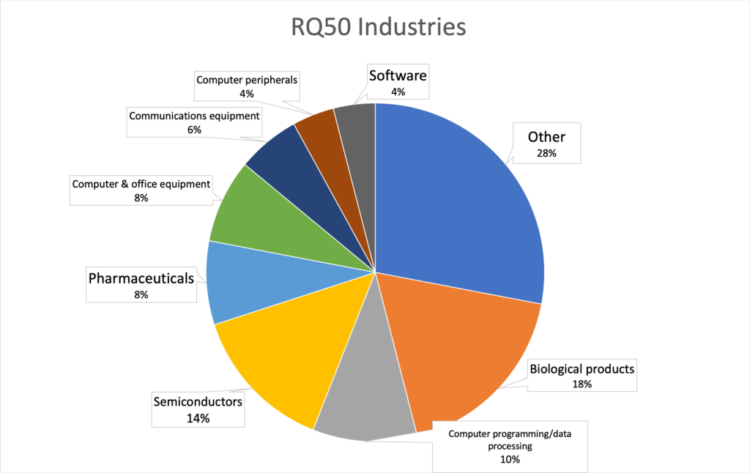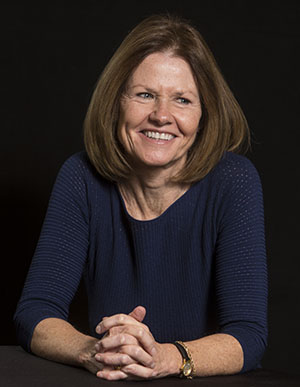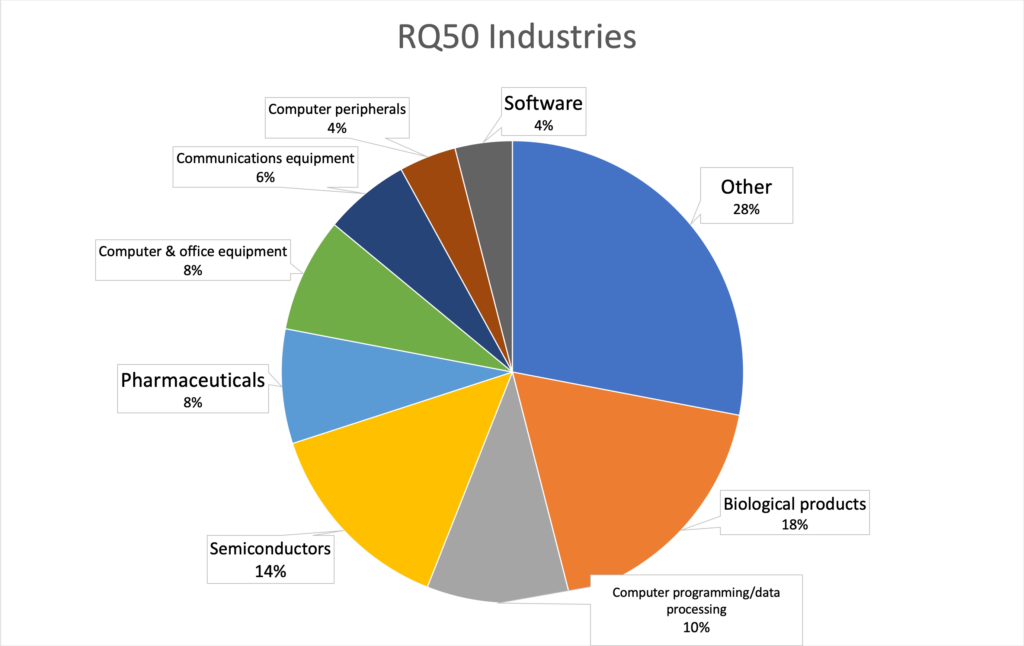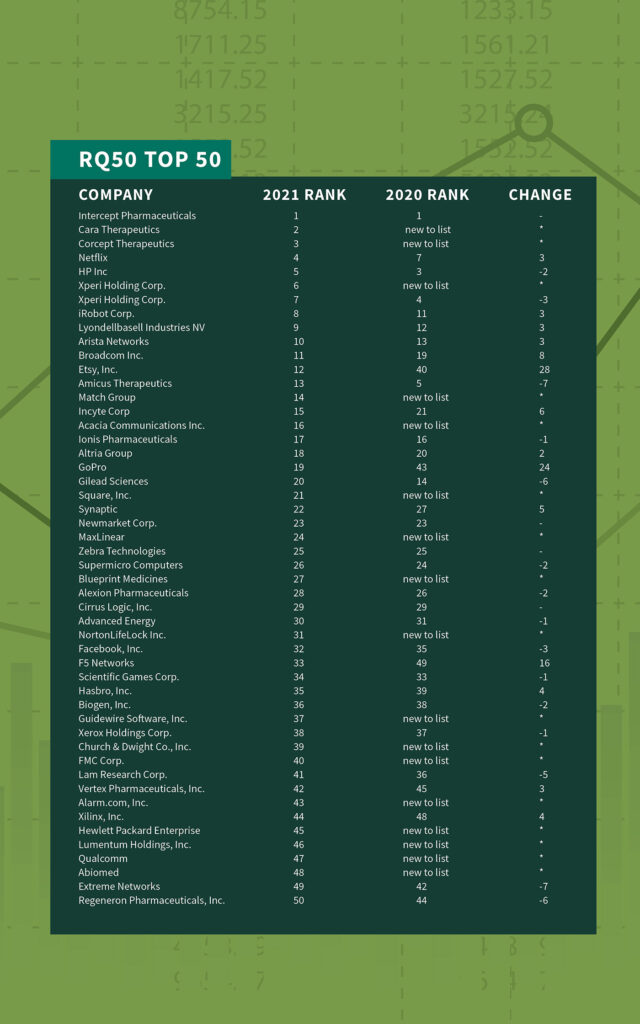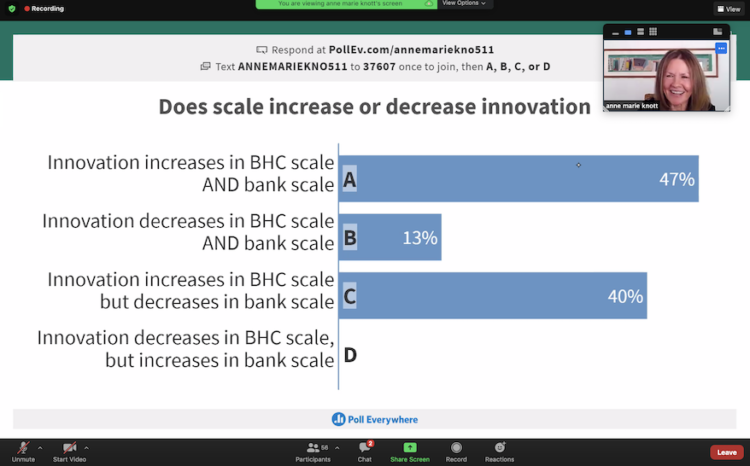Academia is turning the next generation of scientists into “research managers,” not bold scientific thinkers. So says Markus Baer, professor of Organizational Behavior at Olin.

He lays out this argument in The EMBO Journal: Conditions that encourage scientists to engage in relentless, creative exploration of the unknown are becoming harder to find.
“For one, finding new ideas appears increasingly difficult,” Baer and coauthors write in “Creativity as an antidote to research becoming too predictable.”
US data suggest groundbreaking research in many fields, including medicine, is declining. Yet the number of papers published each year has increased, with some unfortunate side effects.
Calcification
“Scientists focus their attention on work that is already well-cited rather than on new ideas or ideas on the fringes of the scientific mainstream,” Baer said. “This leads to a calcification of the intellectual structure of a field, slowing down progress over time.”
Funding sources for research grants often make matters worse. The norm now in many fields: Grant proposals must provide substantial data supporting the proposed theories and hypotheses. Basically, funding agencies reward work on previously established topics.
“A journey into the exploration of the unknown has been replaced with a ticket on the Shinkansen bullet train: Destination known and always on time.”
Baer
Researchers are responding by playing it safe, Baer says. “There’s a tendency to minimize risk.” Many chase ideas that, from the outset, are likely to be publishable to ensure a constant stream of papers.
“I certainly have had my fair share of encounters with, for instance, journals who reject an idea because it is novel and does not fit the current scientific mold,” Baer said.
Baer is known for his research on creativity and innovation. He wrote the article as a follow-up to a symposium organized by the Biotech Research & Innovation Centre at the University of Copenhagen. Baer was an invited speaker with the mission of offering ideas for how to inject more creativity into scientific inquiry.
Covid test
Gone are the days when scientists could explore Yellowstone National Park without knowing what would come of it, Baer says. There, in the late 1960s, microbiologist Thomas Brock discovered heat-resistant bacteria in the Mushroom Spring.

Guess what? Brock’s discovery eventually led to the development of the chemical process behind today’s Covid test.
Sadly, today’s pressure to produce often means budding researchers are recruited onto preexisting projects with already defined milestones and deliverables.
Fortunately, researchers at Olin don’t face the same pressures as medical researchers. Those scientists are profoundly dependent on grant money for labs and other necessary expenses, Baer says.
“I think our approach to training doctoral students allows students to inject creativity into the research process. Erik Dane teaches a course in the PhD curriculum that tries to provide students the tools to do exactly that.”
Bullet train redesign
One strategy is to encourage early-stage scientists to immerse themselves in similar problems and the solutions they may inspire, Baer says.
Years ago, the Shinkansen bullet train created an ear-splitting sonic boom as it raced out of tunnels. A group of engineers was tasked to redesign the train to make it quieter.
One of the engineers was a bird watcher. He made a connection. Birds diving into the water to catch prey faced a similar challenge to the zooming through a tunnel. The new design of the train’s front? It was based on the shape of the Kingfisher’s beak. That bird dives at high speed from one environment, air, into another, water, with barely a splash.
Researchers should be encouraged and allowed the time to pursue topics other than those they’re actively investigating, Baer says. They should join collaborations with scientists from other domains and even disciplines who are investigating analogous problems.
‘Stay in the cloud’
For research to flourish, it’s imperative to rethink the knowledge production process to allow for the occasional detours, setbacks and dead ends, Baer says.
The bottom line: Research leaders may want to embrace the values of autonomy and novelty more courageously—and embolden early-stage researchers to do the same. Also, academic institutions should take a hard look at themselves. Do they need to increase the breathing space and time for scientists to engage in the exploration of new ideas and research avenues?
“Uri Alon, professor and systems biologist at the Weizmann Institute of Science, talks about the notion of the research cloud—the boundary between the known and unknown,” Baer said.
“It seems to me that we are not encouraging young scholars to stay in the research cloud long enough to truly cross over into the unknown. In fact, the notion of having one’s heads up in the cloud has a negative connotation.
“We need to encourage the next generation of scholars to stay in the cloud and tolerate the feeling of not knowing where this journey may lead.”





